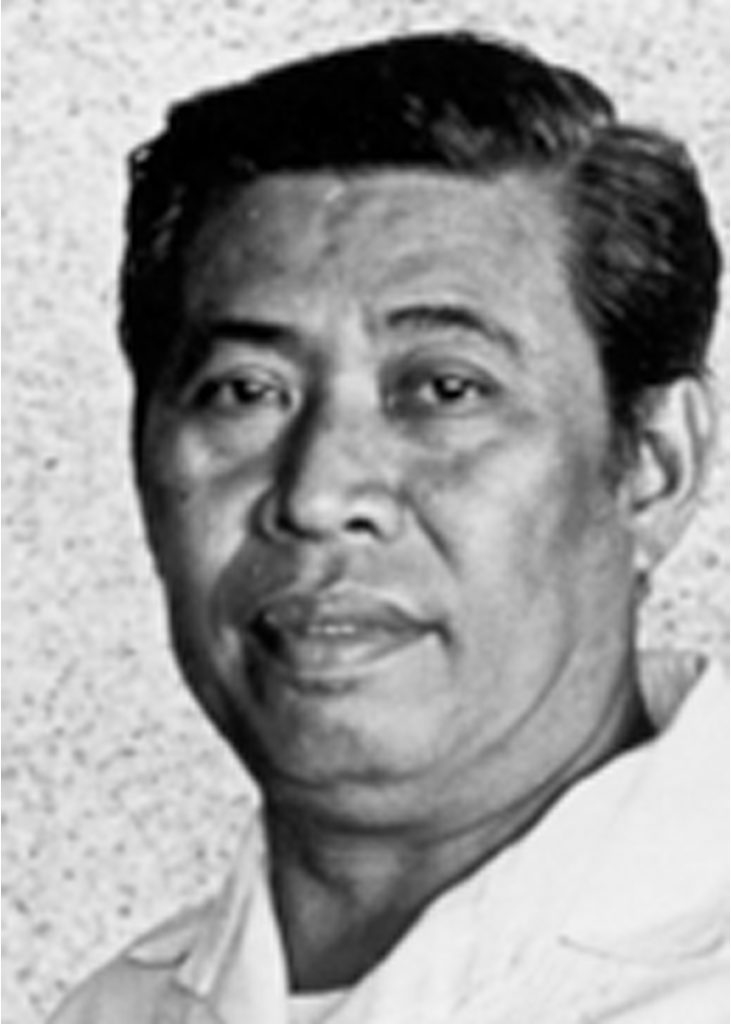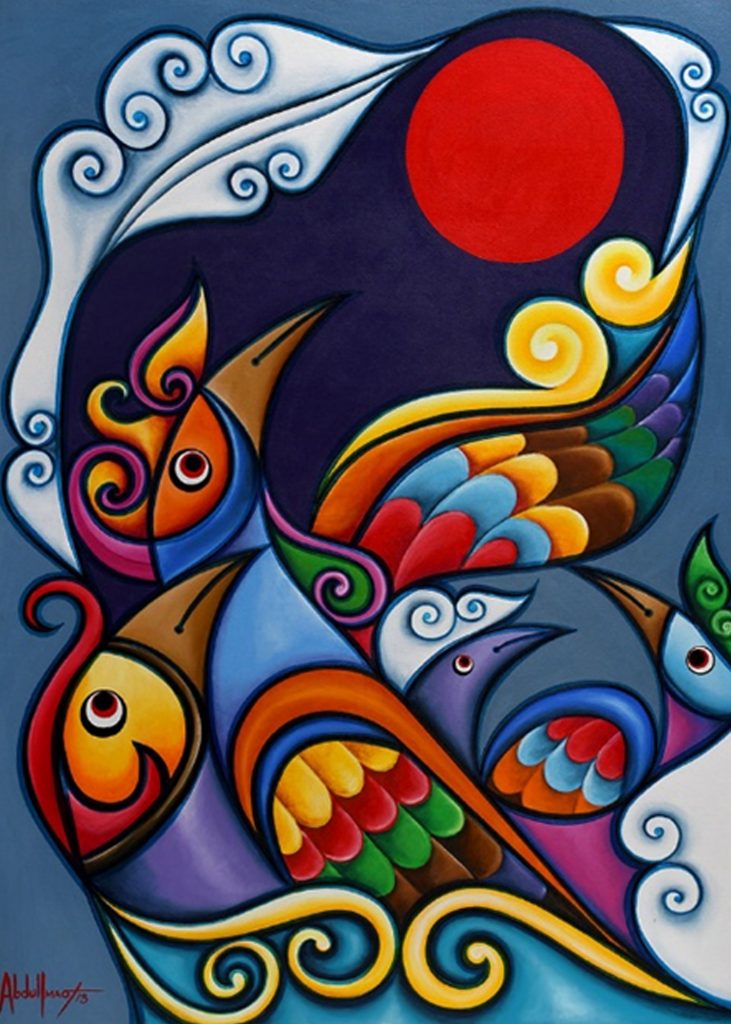
Once a child fascinated by the glistening colors of fishes, National Artist Dr. Abdulmari Asia Imao carved and painted his way to success through his determination and passion for the visual arts. His humble beginnings in the small town of Siasi on the island of Sulu, along with his Bangsamoro identity, served as his inspiration for the majority of his artworks.
Through the academic scholarships he received, Dr. Imao was able to finish his college education from University of the Philippines and his post-graduate studies abroad. National artists Guillermo Tolentino and Napoleon Abueva were among his mentors.

His signature paintings incorporate vibrant colors and motifs such as the sarimanok, fish, and okir patterns.
He attributed his use of these motifs and striking colors like blue, green, yellow, pink, purple, and orange to his Bangsamoro origin and his experience working in a fish port, where he witnessed the diverse colors of the fishes he hauls for a living.
In 1968, he was recognized as one of the Ten Outstanding Young Men (TOYM) of the Philippines. This recognition led him to become a full-time sculptor and painter, focusing on mastering Moro culture and arts.
On June 9, 2006, the National Commission for Culture and the Arts (NCCA), conferred upon Dr. Imao the title of National Artist for Visual Arts.

He was the first Bangsamoro artist to receive this prestigious recognition since 1972. Dr. Imao’s works mainstreamed and introduced Moro arts and culture throughout the entire country.
Aside from his paintings, among his masterpieces are sculptures and murals found in different parts of the Philippines, such as the Amandagat Monument in Batanes, the President Elpidio Quirino Monument on Roxas Boulevard, the Industrial Mural at the Philippine National Bank in San Fernando, La Union, the Mural Relief on Filmmaking at Manila City Hall, the Antonio Pigafetta Monument in Fort San Pedro, Cebu City, the Sultan Kudarat Mural at the Philippine International Convention Center (PICC), and statues of Panglima Unaid and Captain Abdurahim Imao at Sulu’s Provincial Capitol.
Dr. Imao’s relentless pursuit of knowledge and his profound love for his cultural roots culminated in his well-deserved recognition as a National Artist. Today, his works inspire emerging Bangsamoro artists across the nation, encouraging them to embrace and showcase their individual cultures and talents.
The life story of this esteemed national artist reaffirms the notion that there is an artist in every child waiting to paint and mold their dreams. He passed away on December 16, 2014, leaving behind a legacy not only for the Bangsamoro but for the entire country. (Norjana Malawi/BIO)







